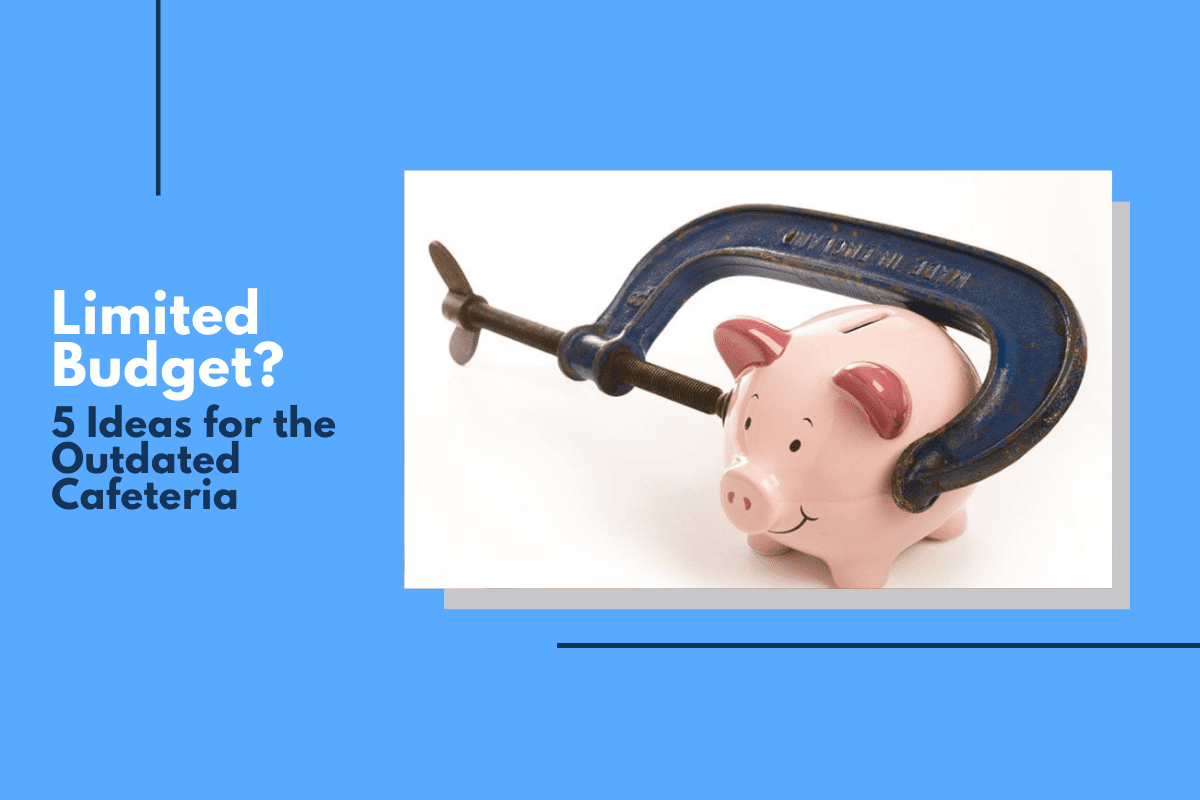
When you have a tight or non-existent budget, here are five ways you can renovate an outdated cafeteria.
School districts participating in the National School Lunch Program ( serve healthy meals to a staggering 31 million children daily. But many schools lack adequate infrastructure and up-to-date foodservice equipment. With ever changing regulations that alter school foodservice programs, along with growing student populations, managing a program with outdated equipment adds another level of challenges.
Schools have a growing list of daily issues to contend with besides outdated equipment; labor shortages, space restrictions, limited storage for the increase in fresh fruits and vegetables, plus a decrease in allotted time for lunch to name a few. Often these concerns take center stage. Combine this with tight or non-existent budgets, what is a foodservice operator to do?
Here are 5 options to consider:
1.) “One-by-One” Replacements – Instead of doing a full renovation, one option is to replace outdated counters or sections of counters one-by-one with flexible counters. This approach enables you to begin the renovation process with one-off replacements which may be more attainable and cost-effective for you to serve a growing student population. It also spreads out the transition over several years with smaller and more frequent equipment purchases.
Unfortunately, this isn’t a practical solution. My school has an outdated serving line that’s “one” continuous piece. What can I do?
2.) Think Vertical – When you have space limitations as well as increased student populations and limited lunch time to serve students in 10-15 minutes, go vertical. If you’re operating a 30+ year old cafeteria, you may not be able to retrofit your serving line. So if budget allows, consider purchasing a heated and/or refrigerated visual merchandising display case for pre-made grab-and-go menu options. This will allow you to serve more fast-access items in one location, reorganize overcrowded counter space and alleviate serving line congestion by having students quickly make meal selections. Artfully displaying menu selections also raises visibility which could potentially serve more students.
This solution doesn’t work for me due to a lack of counter space and a lack of electrical supply required to plug in a display case. Is there another option?
3.) Pop-up Portable Retail Counters – These types of mobile counters can provide an additional revenue-generating stream in underutilized spaces. As “extended or additional lunch lines,” they offer the advantage of being moved anywhere within a cafeteria or even to open areas outside of a cafeteria such as lobbies or hallways. This can also expand your service to provide self-serve grab-and-go prepacked reimbursable meals, a la carte menus or afterschool smart snacks away from your existing serving line. Positive impacts include capturing or increasing participation and serving more students in a limited timeframe. Pop-up portable retail counters can be an affordable option when budgets don’t allow for a full renovation or one-by-one counter replacements.
I don’t have the staff required to operate this concept. I also lack the budget to purchase another piece of equipment. Is there another option to consider?
4) Merchandising – Merchandising can breathe new life into your existing space and give a facelift to an existing serving line. With limited budgets, consider new vinyl wraps for your existing counter fronts. This can provide a low-cost solution to refreshing tired and outdated counters. A quick Google search can provide you a list of several local companies that can assist you with this method. For décor, select a few collections of colorful eye-catching merchandising props to enhance aesthetic appeal and functionality. Also, adding signage to help identify menus and food stations can successfully increase participation. Incorporating the 4 visual keys to merchandising is an inexpensive yet impactful way to add a “wow factor” to your existing space.
I just don’t have any funds, but I really need to find a way to speed up the service. Is there a “no cost” option?
5) Reorganize Your Serving Line – For little to no cost, reorganizing your serving line can improve functionality and temporarily fix traffic patterns. Start by observing your serving line during peak breakfast or lunch rush. Look for bottlenecking issues, from food selection to point of service. Identify where the line slows down. Are there too many menu choices for students to choose from? If you provide five options, perhaps reducing them to three would help students make faster selections. Or, consider reorganizing the flow. If possible, try moving your cashier station away from the serving line(s) to alleviate backups and maintain flow. If you serve small condiment packets, neatly reorganize them in individual baskets or decorative tins for quick and easy access. Streamlining the process with some small tweaks can shave off a few seconds here and there which all adds up to getting students through the line faster.
We’ve worked with many districts with limited budgets to come up with solutions that were right for them. We can help you too with a site visit to view your operation in action and discuss possible ideas that you can immediately incorporate into your dining space. Tell us what you need help with. Contact us today!
